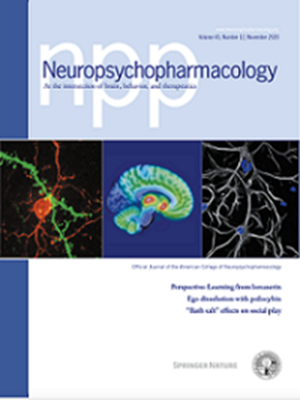Aversion-induced dopamine reductions predict drug-taking and escape behaviors
IF 6.6
1区 医学
Q1 NEUROSCIENCES
引用次数: 0
Abstract
Dopamine release in the nucleus accumbens core (NAcC) has long been associated with the promotion of motivated behavior. However, inhibited dopamine signaling can increase behavior in certain settings, such as during drug self-administration. While aversive environmental stimuli can reduce dopamine, it is unclear whether such stimuli reliably engage this mechanism in different contexts. Here we compared the physiological and behavioral responses to the same aversive stimulus in different designs to determine if there is uniformity in the manner that aversive stimuli are encoded and promote behavior. NAcC dopamine was measured using fiber photometry in male and female rats during cocaine self-administration sessions in which an acutely aversive 90 dB white noise was intermittently presented. In a separate group of rats, aversion-induced changes in dopamine were measured during an escape design in which operant responses terminated aversive white noise. Aversive white noise significantly reduced NAcC dopamine and increased cocaine self-administration in both male and female rats. The same relationship was observed in the escape design, in which white noise reduced dopamine and promoted the performance of escape behavior. In both designs, the magnitude of the dopamine reduction predicted behavioral performance. While prior research demonstrated that pharmacologically reduced dopamine signaling can promote intake, this report demonstrates that this physiological mechanism is naturally engaged by aversive environmental stimuli and is generalizable to non-drug contexts. These findings illustrate a common physiological signature in response to aversion that may promote both adaptive and maladaptive behavior.

厌恶引起的多巴胺减少预示着吸毒和逃避行为。
长期以来,伏隔核(NAcC)的多巴胺释放与动机行为的促进有关。然而,抑制多巴胺信号可以在某些情况下增加行为,比如在自我给药期间。虽然令人厌恶的环境刺激可以减少多巴胺,但尚不清楚这些刺激是否在不同的环境中可靠地参与这一机制。在这里,我们比较了不同设计中对相同厌恶刺激的生理和行为反应,以确定厌恶刺激的编码和促进行为的方式是否一致。用纤维光度法测量了雄性和雌性大鼠在可卡因自我给药期间的NAcC多巴胺含量,在此期间间歇性地出现急性厌恶的90 dB白噪音。在另一组大鼠中,在逃避设计中,操作反应终止了厌恶的白噪音,测量了厌恶引起的多巴胺变化。在雄性和雌性大鼠中,令人厌恶的白噪音显著降低了NAcC多巴胺并增加了可卡因的自我给药。在逃避设计中也观察到同样的关系,白噪音减少多巴胺并促进逃避行为的表现。在这两种设计中,多巴胺减少的幅度预测了行为表现。虽然先前的研究表明,药理学上减少多巴胺信号可以促进摄入,但本报告表明,这种生理机制是由厌恶的环境刺激自然参与的,并且可以推广到非药物环境中。这些发现说明了对厌恶反应的一个共同的生理特征,它可能促进适应和不适应行为。
本文章由计算机程序翻译,如有差异,请以英文原文为准。
求助全文
约1分钟内获得全文
求助全文
来源期刊

Neuropsychopharmacology
医学-精神病学
CiteScore
15.00
自引率
2.60%
发文量
240
审稿时长
2 months
期刊介绍:
Neuropsychopharmacology is a reputable international scientific journal that serves as the official publication of the American College of Neuropsychopharmacology (ACNP). The journal's primary focus is on research that enhances our knowledge of the brain and behavior, with a particular emphasis on the molecular, cellular, physiological, and psychological aspects of substances that affect the central nervous system (CNS). It also aims to identify new molecular targets for the development of future drugs.
The journal prioritizes original research reports, but it also welcomes mini-reviews and perspectives, which are often solicited by the editorial office. These types of articles provide valuable insights and syntheses of current research trends and future directions in the field of neuroscience and pharmacology.
 求助内容:
求助内容: 应助结果提醒方式:
应助结果提醒方式:


